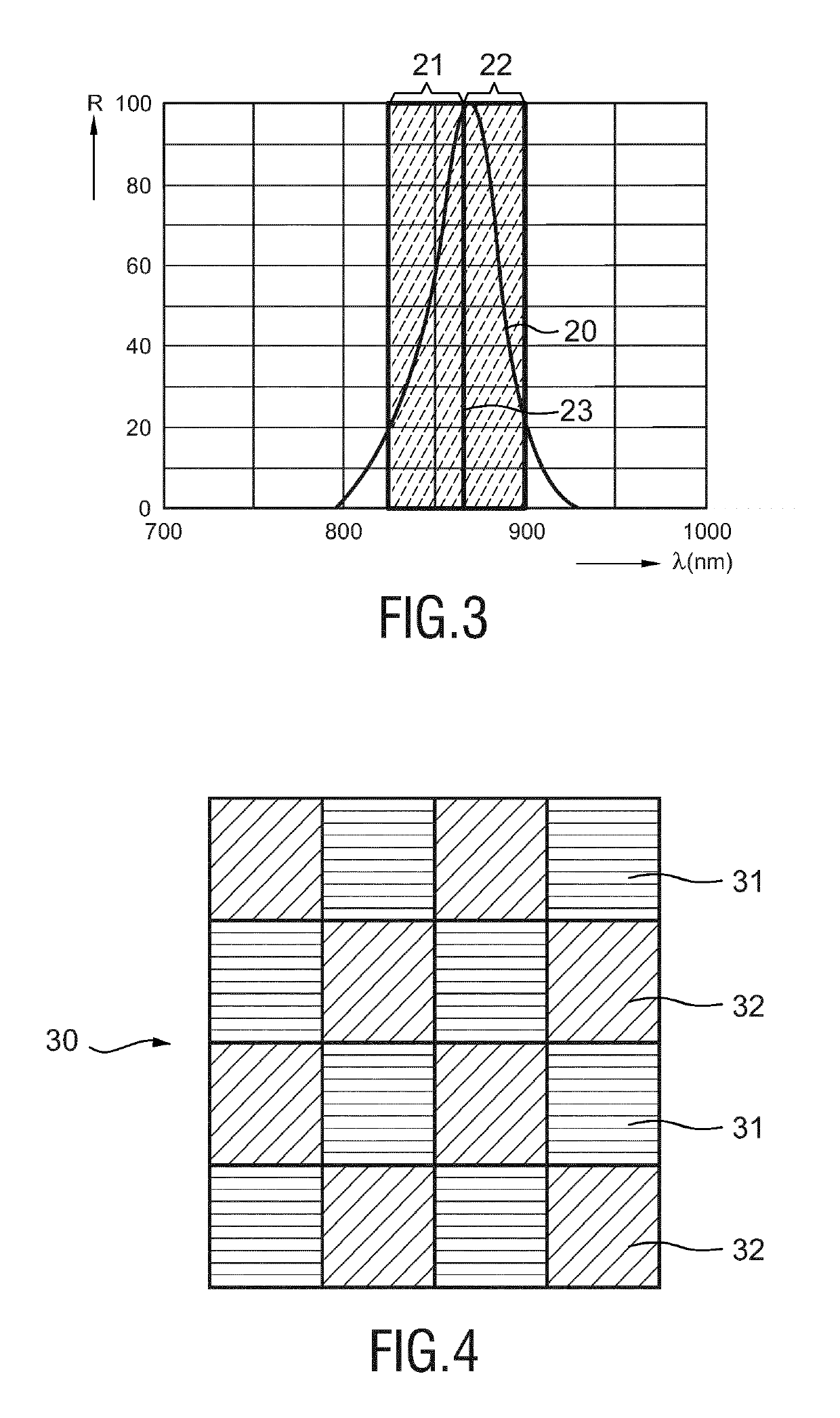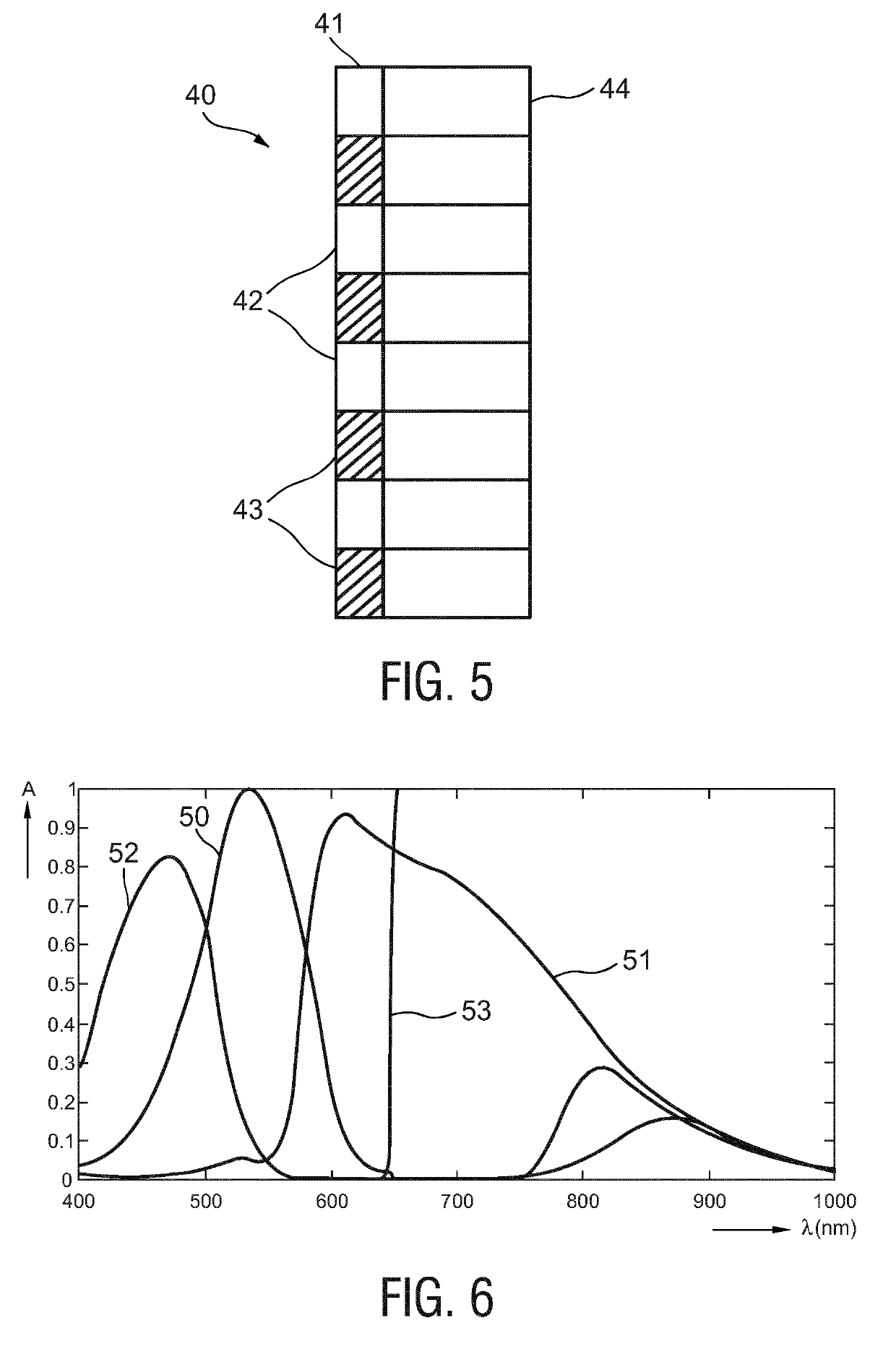System and method for vital signs detection
a technology of vital signs and systems, applied in the field of systems and methods for vital signs detection, can solve the problems of unobtrusive contact sensors for respiration measurements, unfavorable medical use, and unpleasant contact ppg measurement, and achieve the effects of reducing radiation energy sensed, high cost attraction, and reducing radiation intensity
- Summary
- Abstract
- Description
- Claims
- Application Information
AI Technical Summary
Benefits of technology
Problems solved by technology
Method used
Image
Examples
Embodiment Construction
[0038]FIG. 1 shows a schematic diagram of a first embodiment of a device 10 and a system 100 according to the present invention. The device 10 comprises a radiation detector 12 for detecting radiation 2 reflected from a skin area of a subject 1, such as a patient, and for generating first and second detector signals from the detected radiation. The device 10 further comprises a vital signs detector 14 for detecting a vital sign (e.g. heart rate, SpO2, respiration rate, etc.) from a combination of said first and second detector signals.
[0039]The radiation detector 12 may e.g. be implemented as a photodetector or a camera, e.g. an RGB camera (optionally with an appropriate filter) and is configured to detect electromagnetic radiation from a skin area (e.g. the forehead, the cheeks, the hand, etc.) that is illuminated by radiation 3 of a limited wavelength range, e.g. by a radiation source 16, such as an LED (e.g. a near-infrared LED). The first detector signal generated by the radiati...
PUM
 Login to View More
Login to View More Abstract
Description
Claims
Application Information
 Login to View More
Login to View More - R&D
- Intellectual Property
- Life Sciences
- Materials
- Tech Scout
- Unparalleled Data Quality
- Higher Quality Content
- 60% Fewer Hallucinations
Browse by: Latest US Patents, China's latest patents, Technical Efficacy Thesaurus, Application Domain, Technology Topic, Popular Technical Reports.
© 2025 PatSnap. All rights reserved.Legal|Privacy policy|Modern Slavery Act Transparency Statement|Sitemap|About US| Contact US: help@patsnap.com



